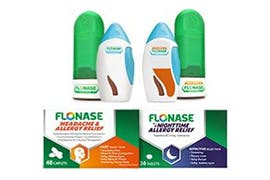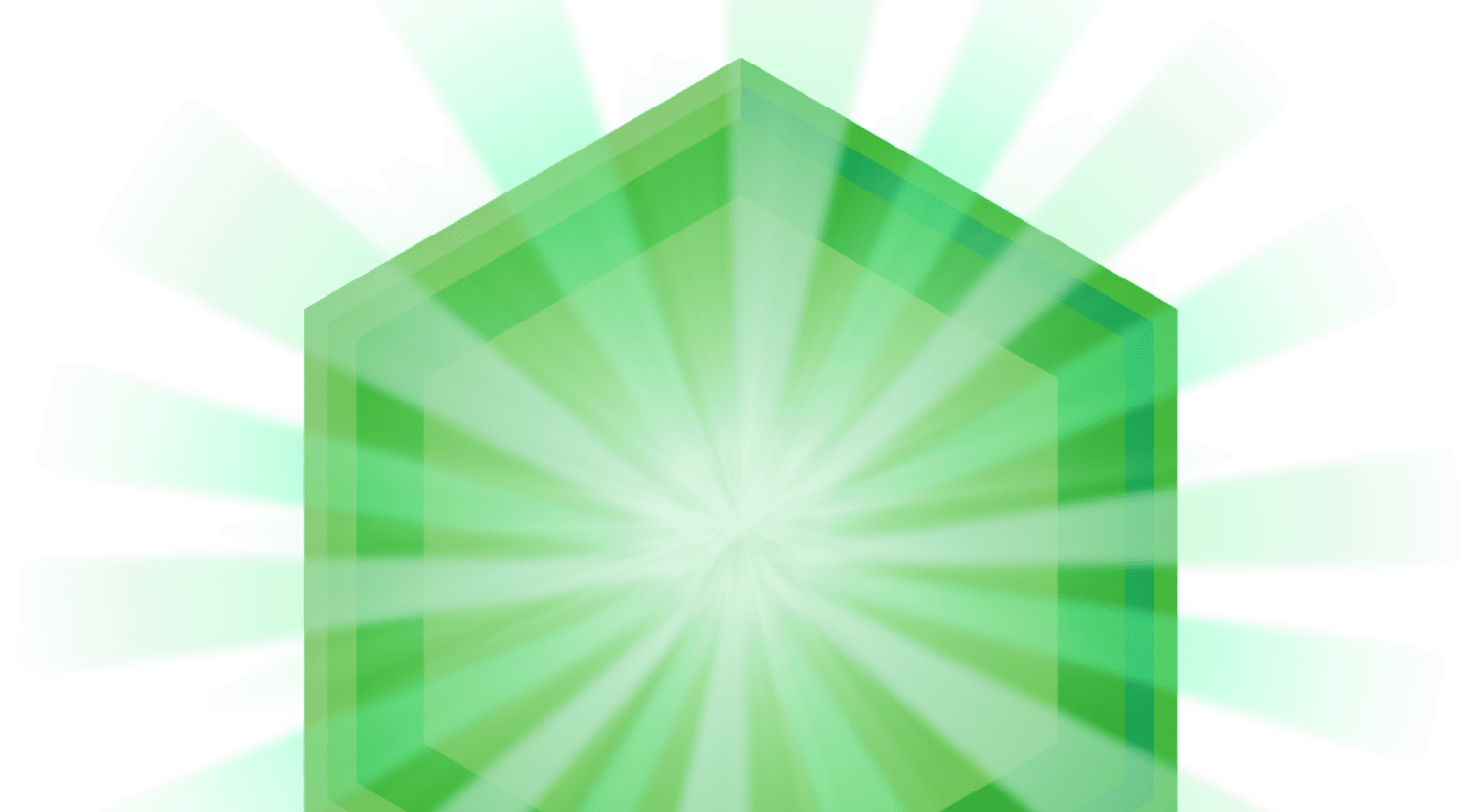Mold Allergies: Types, Symptoms & Treatment
People are affected by all kinds of allergens. Some of us need to avoid pollen and dust; others can’t be around dogs or cats. But no matter what you’re allergic to, allergy symptoms can interfere with daily activities and reduce your quality of life.
Click below to learn more about each type of allergen.
MOLD ALLERGIES
Mold is a type of fungus that can be found both outdoors and in homes or buildings. It thrives in dark, damp environments, so you’ll most likely find mold growing in your basement, bathroom, under a sink, or in the garden on a log or pile of fallen leaves.1, 2
The spores (or seeds) of mold are barely visible to the naked eye and travel easily through the air. While all of us regularly breathe in these spores, they can cause an allergic reaction in some people – and because mold can grow in so many different places, these mold allergies can occur at any time of the year.2, 3
Luckily, allergy symptom relief is available. Learn more about the causes, symptoms and treatment options for mold allergies below.
TYPES OF MOLD THAT CAUSE ALLERGIES
While mold allergy symptoms can occur year-round, they are most common from July to early in the fall, as outdoor molds mostly disappear during the winter. There are many different types of mold, however only a few can cause allergic reactions.3
Some of the most common types of mold that can trigger an allergic response include:4
- Alternaria
- Aspergillus
- Aureobasidium (Pullularia)
- Cladosporium (hormodendrum)
- Epicoccum
- Fusarium
- Helmin-thosporium
- Mucor
- Pencillium
- Rhizopus
Certain molds are toxigenic, meaning they produce substances called ‘mycotoxins’ that can be hazardous.5 Mold can be many different colors, and color should not be used as an indicator of how dangerous a type of mold may be.5
You may have heard the term “black mold" and that it is a more dangerous form of mold, however this isn’t necessarily true. Rather, all types of mold (and the source of its production) should be removed or repaired, regardless of what color they are.5
MOLD ALLERGY SYMPTOMS
Like other allergies, including pet dander or dust allergies, your immune system cells respond to mold spores (the allergen) by releasing substances that can cause allergy symptoms. These symptoms may include:2,3
- Sneezing
- Runny nose or nasal congestion
- Itchy, watery eyes
- Itchy skin around the mouth, nose and throat
In some cases, mold spores can also reach the lungs and trigger or aggravate asthma symptoms, such as wheezing, shortness of breath or chest tightness. In rare cases, mold can cause the development of a serious respiratory illness called allergic bronchopulmonary aspergillosis.4 Like asthma, symptoms of this illness may include severe wheezing, coughing and shortness of breath.
If you think you may have a mold allergy, speak to your doctor or an allergist for an official diagnosis.
MOLD ALLERGY TREATMENT
If you suspect you have a mold allergy, in addition to speaking with a doctor or allergist, try making a note of the times when your symptoms occur over a two-week period, to help build up a picture of which type of mold (or molds) you might be allergic to. Once you know the cause of your symptoms, it is easier to avoid situations where you might come into contact with spores. You can also take steps to reduce your exposure to mold with these simple tips:3
- Reduce humidity in your home: mold loves moisture, so reducing humidity in the home (ideally to under 45%, but at least to under 50%) can help to control mold production. Dehumidifiers and air conditioners can help to bring humidity levels down.
- Pay attention to mold spore counts: knowing when mold spore counts are high can help you to avoid outdoor activity when possible. Check mold counts in your local area with the online mold and pollen tracker from the National Allergy Bureau.
- Filter the air: use a central air conditioner fit with a certified filter or, if you don’t have an air conditioner, improve air flow through your home by opening windows whenever possible.
- Use a dust mask: if you’re gardening or disturbing plant or grass material, wear a dust mask to reduce your mold spore exposure.
- Remove sources of dampness: these are often in areas of the house like the laundry, bathroom or basement. Be sure to reduce moisture where possible, such as fixing any leaks that occur.
- Keep away rain water: clear your gutters to make sure rainwater drains away from your house to avoid leaks or dampness.
MOLD ALLERGY FAQ
Are mold allergies seasonal?
While there certainly are pollen seasons, mold can be a problem any time of year. That’s because moisture is everywhere. Outdoor mold grows on rotting logs and fallen leaves, in compost piles, and on grasses and grains—especially in the fall. Unlike pollens, molds don’t die with the first frost in late fall or early winter. They just stop growing and lay dormant during this time. In the spring, they can grow on plants killed by the cold.4
Where does mold grow?
Indoors, mold thrives in hot and humid environments, such as the kitchen, bathroom, and basements. If you have a damp basement, leaky faucet, or bathroom that’s overflowed, just cleaning up the mess may not be enough. Make sure the moisture hasn’t seeped into the floors, because if so, you may need to pull up your floorboards to make sure you’re mold-free.5
What happens when you have a mold allergy?
If you have a mold allergy, your immune system overreacts when you breathe in mold spores. That’s why inhaling mold spores, whether outdoors or indoors, can cause an allergic reaction in some people. Symptoms may include nasal congestion, sneezing, a runny nose, and itchy, watery eyes.4
What can i do to remove mold from my home?
Unfortunately, mold exists everywhere, but there are steps you can take to limit your contact with mold and reduce indoor allergens.1,2,4
- Scrub sinks and tubs monthly
- Clean refrigerator door gaskets and drip pans
- Clean garbage cans often
- Fix water leaks immediately to keep mold from growing
- Use a dehumidifier to keep your house dry
- Check mold counts on televised or online weather reports
MOLD ALLERGY RELIEF
Mold is persistent and can be found anywhere, so no matter how much effort you make to reduce it, if you do have a mold allergy, you may still find yourself suffering with symptoms at any time. Thankfully, an over-the-counter allergy relief medication like FLONASE Allergy Relief Spray can help.
The FLONASE range relieves your allergy symptoms, including nasal congestion, plus sneezing, runny nose and itchy, watery eyes. FLONASE products help block six allergic substances, while most allergy pills only block one.*
Discover the full range of FLONASE allergy relief products today, including allergy relief medication for children.
*Mechanism vs. most OTC allergy pills. Flonase acts on multiple inflammatory substances (histamine, prostaglandins, cytokines, tryptases, chemokines and leukotrienes). The exact number and precise mechanism are unknown.
Source Citations:
1. Mold Allergy. American College of Allergy, Asthma and Immunology. https://acaai.org/allergies/types/mold-allergy/. Accessed 7/21/20.
2. Mold allergy. American Academy of Allergy, Asthma and Immunology. https://www.aaaai.org/conditions-and-treatments/allergies/mold-allergy/. Accessed 7/21/20.
3. Mold allergy. Asthma and Allergy Foundation of America. https://www.aafa.org/mold-allergy/. Accessed 7/21/20.
4. Mold allergy. Asthma and Allergy Foundation of America (New England Chapter). https://asthmaandallergies.org/asthma-allergies/mold-allergy/. Accessed 7/21/20.
5. Mold (FAQs). Centers for Disease Control and Prevention. https://www.cdc.gov/mold/faqs.htm/. Accessed 7/21/20.





